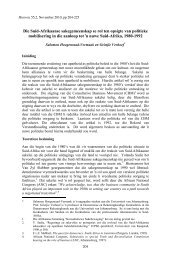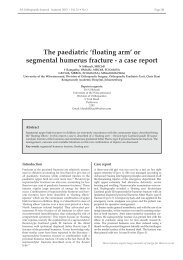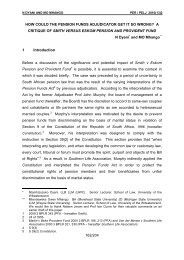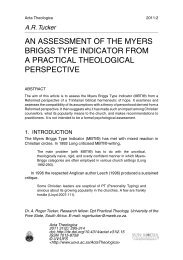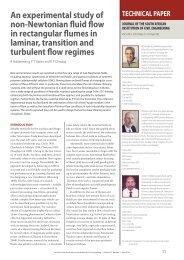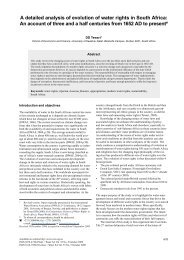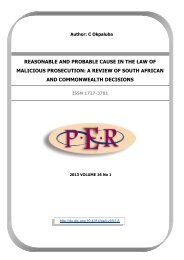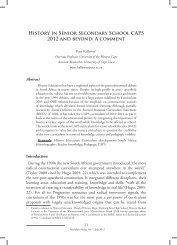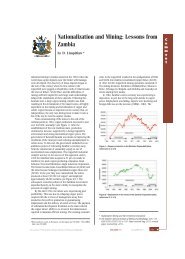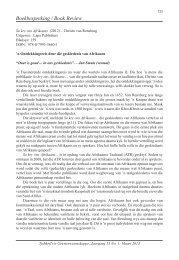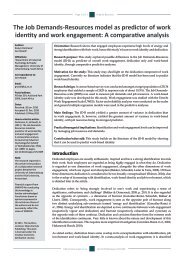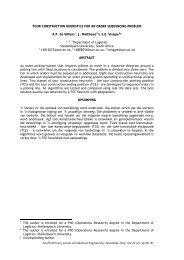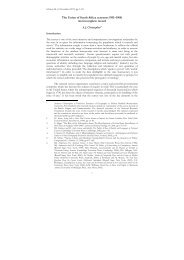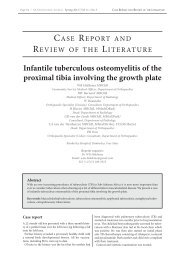Frances Baard's and Helen Joseph's struggle against apartheid ...
Frances Baard's and Helen Joseph's struggle against apartheid ...
Frances Baard's and Helen Joseph's struggle against apartheid ...
You also want an ePaper? Increase the reach of your titles
YUMPU automatically turns print PDFs into web optimized ePapers that Google loves.
Musiiwa - <strong>Frances</strong> Baard’s <strong>and</strong> <strong>Helen</strong> Joseph’s <strong>struggle</strong><br />
would say: “Well, you must look after your children, look after your house. I have no time<br />
for what you are trying to do.” 56<br />
Similarly, Joseph notes: “We represent <strong>and</strong> we speak on behalf of thous<strong>and</strong>s of women –<br />
women who could not be with us. But all over this country, at this moment, women are<br />
watching <strong>and</strong> thinking of us. Their hearts are with us.” 57 The two narratives’ major<br />
contribution has not been the retrieval of women’s experiences per se, but the ability to<br />
read <strong>and</strong> play out the complexity of women’s sentiments <strong>and</strong> consciousness, thereby<br />
blurring boundaries at the level of women’s consciousness <strong>and</strong> interpretation of their<br />
experiences of different forms of hegemony.<br />
However, there are notable differences in the manner Bard <strong>and</strong> Joseph<br />
conceptualise hegemony. For Baard, it was a complete revolution. For Joseph, an initial<br />
dem<strong>and</strong> for liberal reforms rather than a complete revolution. As she explained at length:<br />
At the Federation Conference we discussed the suggested dem<strong>and</strong>s very carefully <strong>and</strong> only<br />
two were dropped. One was the section calling for better conditions in the “reserves”, the<br />
parts of South Africa set aside for occupation by Africans, the 13 per cent of the l<strong>and</strong> for<br />
85 per cent of the people. I was still ignorant of much that mattered to the African people<br />
<strong>and</strong> had not appreciated that the dem<strong>and</strong> would be for a just redistribution of the l<strong>and</strong>, not<br />
better reserves. I had accepted, as I accepted so much else, the factual existence of the<br />
reserves <strong>and</strong> dem<strong>and</strong>ed, therefore, amelioration of what ought not to be.<br />
The other dem<strong>and</strong>, which was rejected was also my contribution – for better birth<br />
control clinics. This was my social work approach <strong>and</strong> drew lively protest from both men<br />
<strong>and</strong> women. (There were always a few men at our women’s conferences, probably out of<br />
curiosity.) No one must tamper with the right to bear children, no matter what the social<br />
or health consequences. I know that especially in urban areas, health education has<br />
brought a somewhat different approach now to birth control, but at that time there were<br />
strong political overtones, a suspicion that the “system” sought to reduce the numbers of<br />
African people, while encouraging an increase in the white birthrate. 58<br />
Joseph had been fighting side by side with Africans but from a completely different<br />
perspective of a freedom that was couched in liberal reforms until such time that her<br />
submissions were turned down. She undergoes a moment of self-metamorphosis where<br />
her perception of freedom transforms to that of a complete revolution.<br />
Both women perceived unity <strong>and</strong> difference in their <strong>struggle</strong> <strong>against</strong> <strong>apartheid</strong>.<br />
For example, the 1952 Defiance Campaign is presented as an all encompassing activity.<br />
Women <strong>and</strong> men were both involved. According to Baard: “Everyone decided that we<br />
were not going to obey the laws which the government had made because if no one<br />
obeyed these laws then they would have to take them away.” 59 Baard <strong>and</strong> Joseph<br />
conceptualise <strong>and</strong> present the 1956 anti-pass campaign march as a women’s issue.<br />
However, Baard sees a difference in the women’s march when she says: “What a sight, so<br />
quiet, <strong>and</strong> so much colour, many women in green, gold <strong>and</strong> black, <strong>and</strong> the Indian women<br />
in their bright saris!” 60 Joseph straddles between her perception of racial unity in a<br />
women’s demonstration <strong>against</strong> the pass laws, <strong>and</strong> difference in that unity. She notes:<br />
56. Baard <strong>and</strong> Schreiner, My Spirit is Not Banned, Part 2, “The ANC <strong>and</strong> the Women’s League”.<br />
57. Joseph, Side by Side, Part 1. Chapter I. “Twenty thous<strong>and</strong> strong we marched”.<br />
58. Joseph, Side by Side, Part 1, Chapter 5, “South Africa Belongs to All who Live in It”.<br />
59. Baard <strong>and</strong> Schreiner, My Spirit is Not Banned, Part 2, “The Defiance Campaign”.<br />
60. Baard <strong>and</strong> Schreiner, My Spirit is Not Banned, Part 2, “The Fight <strong>against</strong> Passes Continues”.<br />
76



